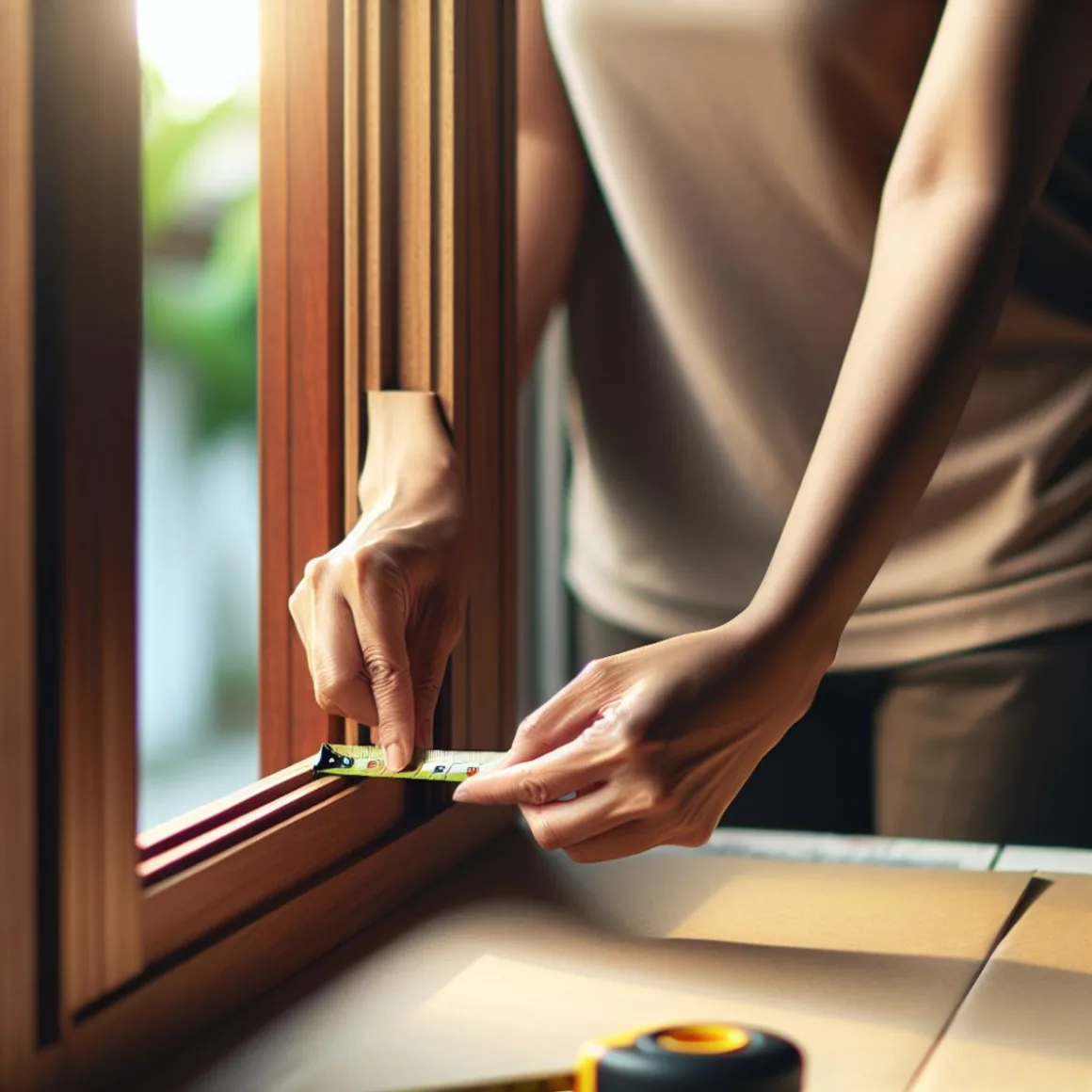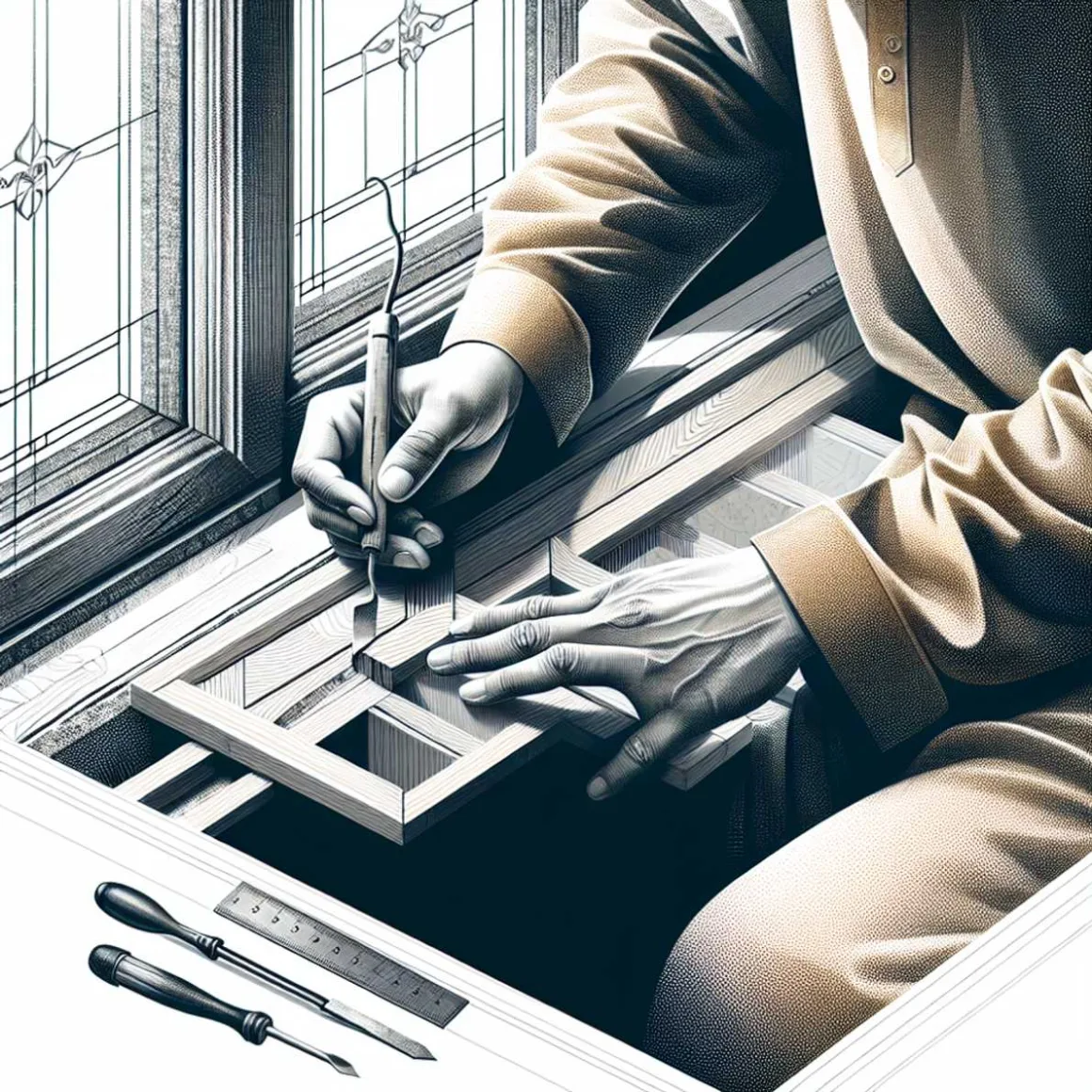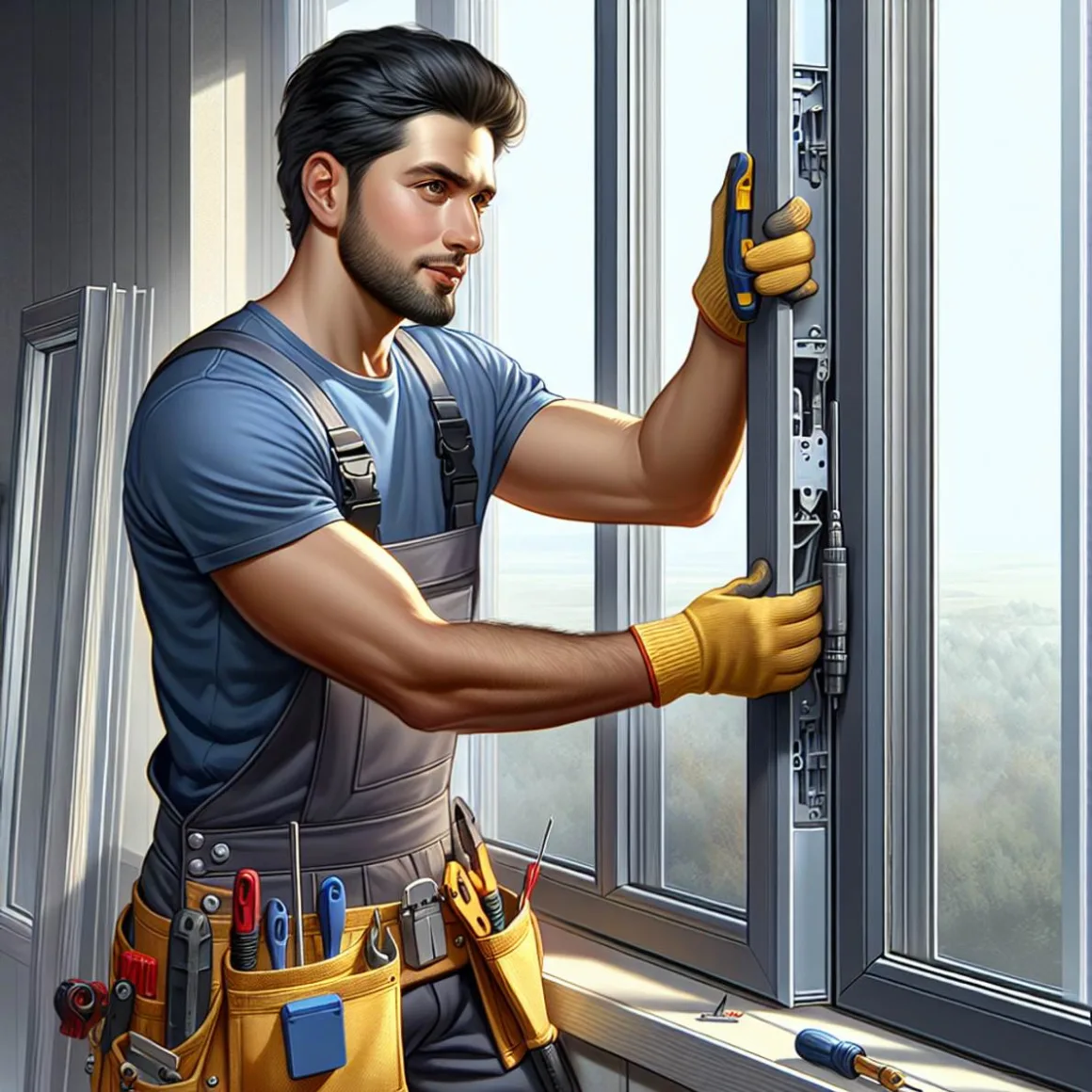Introduction
Double hung windows have become the favorite choice for smart homeowners. They not only offer a timeless look that goes well with different architectural styles, but they also have many advantages such as:
- Better control over ventilation
- Easier cleaning process
These benefits have made many people wonder: can you replace casement windows with double hung ones?
The answer is yes, and in this article, we will explore everything you need to know about this window replacement option.

Why Consider Replacing Casement Windows with Double Hung?
Replacing casement windows with these versatile double hung alternatives is more than just following a trend—it’s about customizing your home to suit your lifestyle and preferences.
Casement windows, which are operated by a crank, are known for their:
- Excellent ventilation
- Unobstructed views
However, some people may find them less appealing as their needs change over time.
For those who are considering making the switch from casement to double-hung windows, it’s important to consider the following factors:
- Design Preferences: Double hung windows offer a classic look that can complement any home style. Are you looking to create a cohesive aesthetic?
- Energy Efficiency: Windows play a crucial role in maintaining indoor temperatures. Are you hoping to improve your home’s energy efficiency?
- Budget Constraints: Window replacements can vary greatly in cost. What is your budget for this project? If you’re looking for cost-effective options, you may want to check out these tips on decorating your home within a budget.
Whether it’s adding a touch of elegance or enhancing your home’s functionality, exploring your window replacement options can lead to significant changes in how you enjoy your space. For instance, if security is a concern, you might also want to consider custom security screens for your windows.
Before we delve into the details of replacing casement windows with double hung ones, let’s take a moment to understand what lies ahead in this article. We will cover aspects such as understanding the costs associated with home remodeling, and key considerations like how to choose roller shades for your new windows. And remember, sometimes seeking out professional guidance is the best way to ensure that your window replacement project is nothing short of spectacular.
Understanding Casement Windows and Double Hung Windows

Casement windows are a staple in many homes, known for their side-hinged design that swings open like a door. Operated by cranks that push the window outward, they’re ideal for catching breezes and directing airflow into the home. These windows offer unobstructed views and full ventilation when fully opened, a feature cherished by many homeowners.
Features and Advantages of Casement Windows:
- Unobstructed Views: Due to the lack of muntins or crossbars, you get a clear picture of the great outdoors.
- Full Ventilation: The entire window opens outward, maximizing air intake.
- Security: When closed, the casement window’s design makes it difficult to pry open from the outside.
- Energy Efficiency: They seal tightly against weatherstripping, thus reducing air leakage.
On the other side of our comparison sit double hung windows—an incredibly popular option, characterized by two sashes that move up and down within the frame. This traditional American window style is not only aesthetically versatile but also offers distinct functionality.
Characteristics of Double Hung Windows:
- Easy to Clean: Both sashes typically tilt inwards, making both sides of the glass easier to clean from inside your home.
- Ventilation Options: You can open either the top or bottom sash (or both) for adjustable airflow.
- Screen Friendly: Fits easily with window screens for keeping bugs out while letting fresh air in.
When comparing casement windows to double hung windows, there are several factors to consider:
Design
Casement windows offer a more modern look with uninterrupted glass panes; double hung windows provide a classic aesthetic and fit well with traditional home designs. If you’re looking for options beyond these two styles, exploring custom window design options could be a great idea.
Operation
The crank mechanism in casement windows might be challenging for some people to use, while double hung windows slide up and down easily without protruding outside.
Energy Efficiency
Casement windows typically have lower air leakage rates because of the tight seal created when closed; however, modern double hung windows have vastly improved with energy-efficient features including double glazing.
Ventilation
Casement windows can capture side breezes better due to their ability to funnel air into the house; double hung windows offer versatility by allowing you to open either section for airflow control.
Maintenance
With fewer moving parts, casement windows may require less maintenance over time compared to double hung windows which have more components such as balances and locks that could need attention. However, it’s worth noting that you can find low-maintenance options for both styles.
In terms of maintenance tips or customizing your own unique style, there’s plenty of room for creativity regardless of your choice. And if you’re looking for materials that keep your home safe from heat and fire during this upgrade process, researching different types of used materials is essential.
Understanding these aspects sets the stage for evaluating whether swapping out casement for double hung is a wise move. To further aid in your decision-making process, it would be beneficial to explore resources such as [this article
The Feasibility of Replacing Casement Windows with Double Hung
Replacing a casement window with a double hung window is like trading your reliable old hiking boots for a sleek pair of running shoes – they both cover your feet, but offer different features and experiences. Switching from casement to double hung windows can be a practical and visually appealing choice, but it does come with its own set of challenges.
Can You Replace Casement Windows with Double Hung?
Yes, you can replace casement windows with double hung windows. However, before you jump into this home improvement project, there are a few important things to consider.
1. Compatibility Issues
Each window type has its own installation requirements and structural considerations. Casement windows often have a different frame design compared to double hung ones. They’re similar in the window family, but not identical. You’ll need to make sure that the existing opening can accommodate the new style without needing expensive modifications.
2. Egress Requirements
Safety should always be a top priority! Egress requirements are crucial for emergency situations like fires or other urgent evacuations where your window may be your only way out. It’s essential to ensure that by replacing a casement window with a double hung one, you’re not compromising on these vital safety measures. It’s not just about looks; it’s about having a quick escape route if necessary.
3. Changes in Window Size
Double hung windows work differently than casement windows – they slide up and down instead of swinging out. This difference could mean that you’ll need to make adjustments to the size of your windows to fit the new units into the existing openings. You might have to get creative and potentially modify the height or width of your window space.
While considering these factors, it’s worth noting that windows are more than just pieces of glass; they’re complex components that impact both the design and functionality of your home. This includes aspects such as window sills and window coverings, which should also be taken into consideration during the replacement process.
Methods for Replacing Casement Windows with Double Hung
So, you’ve decided to make the switch from casement to double hung windows? You’re in the right place. This guide will walk you through each step of the process.
Step 1: Measuring for Replacement Window

Before embarking on the replacement journey, it’s vital to take accurate measurements of your existing window. This is a crucial step as it will determine the size of the double hung windows that you’ll need to order.
Follow these steps to ensure a precise measurement:
- Measure the Width: Start by measuring the width of your window. It’s important to take three measurements – one at the top, one in the middle, and another at the bottom of your window frame. This is because not all windows are uniformly square, especially in older homes where settling can cause minor distortions. Use a reliable tape measure for this process.
Tip: Always record the smallest measurement out of these three. If needed, round down to the nearest inch to avoid ordering a window that’s too large.
- Measure the Height: After measuring the width, move on to measure the height of your window. Similar to measuring width, you’ll want to measure at two different points – once on the left side and once on the right side. This ensures accuracy since there may be slight variations due to settling or construction inconsistencies.
Again, use your smallest measurement when ordering your new double hung windows.
By taking accurate measurements, you will ensure a smooth installation process and a perfect fit for your new double hung windows.
Step 2: Removing Trim and Hardware from Your Casement Window

Now that you’ve accurately measured your window frame, it’s time to proceed with the removal of the existing casement window. This process involves two critical steps: removing the trim or molding and disassembling the hardware.
2.1 Removing the Trim or Molding
The trim or molding around your window serves as a decorative feature that also seals gaps between the window and the wall. Here’s how you can safely remove it:
- Start by gently inserting a pry bar under the edge of the trim.
- Apply steady pressure to gradually loosen and lift off the trim without causing damage.
- Continue this process around all edges until the entire trim or molding is removed.
Remember: Always exercise caution while using tools like a pry bar to avoid injury or damage to your wall.
2.2 Disassembling Window Hardware
Next, we focus on removing screws, brackets, or other hardware holding your casement window in place. Follow these steps:
- Identify all visible screws and brackets.
- Use an appropriate screwdriver or power drill to remove screws.
- For brackets, use a wrench or pliers depending on their type and size.
- If your window has additional hardware like sash locks or handles, carefully unscrew and remove them too.
Always remember to store these components in a safe place as you might need them later! Some parts may be reusable, others can serve as useful references when buying replacements.
By carefully completing this step, you’re paving the way for a smooth installation of your new double hung windows.
Step 3: Cutting the Frame: A Step-by-Step Guide

Cutting the frame to fit your new double hung window may seem daunting, especially if you’re not accustomed to using power tools. However, with the right tools and safety precautions, you can complete this task with precision and ease.
What You’ll Need:
To carry out this task efficiently, make sure you have the following items at hand:
- Reciprocating Saw: This is your primary tool for cutting through the frame. If you don’t have one already, you can rent one from a local home improvement store.
- Safety Gear: Always prioritize safety when working with power tools. This includes wearing safety goggles to protect your eyes from debris, gloves to protect your hands, and a dust mask if necessary.
- Work Area Preparations: Before you start cutting, ensure that the area around your casement window is clear of any obstructions that could pose a hazard.
The Cutting Process:
Once you have all your materials ready, follow these steps:
- Mark Your Cut Lines: Use a measuring tape and a marker to outline where you’ll be making your cuts on the window frame. This will serve as your guideline during the cutting process.
- Start Cutting: Turn on your reciprocating saw and follow the marked lines carefully. Maintain a steady pace – rushing can lead to errors or accidents.
- Monitor Your Progress: Periodically stop to check that your cuts are straight and following your pre-marked guidelines.
Remember: Proper preparation is key. Ensure that you are fully equipped and mentally prepared before proceeding with this task. It’s always better to take your time and do it right than rush through and risk damage or injury.
By following these steps meticulously, you’re setting up a solid foundation for the successful installation of your new double hung windows!
Step 4: Step-by-Step Guide to Installing Your New Double Hung Window

Once your window opening is meticulously prepared, it’s time to embark on the exciting part – fitting in your new double hung window. Follow these steps closely:
1. Apply Caulk:
Start by applying a steady bead of caulk along the inside edges of your opening. This will be where your new window comes in contact with the frame and will ensure a snug fit.
2. Position the Window:
Next, carefully lift your double hung window into place. It can be a bit heavy, so you might need an extra pair of hands to help out. Align it perfectly within the opening.
3. Secure the Window:
Secure your new window using screws through its pre-drilled holes into the framing of your house. Be sure to distribute the screws evenly for optimum support.
Note: Don’t forget to check that it’s level! A simple spirit level can come in handy here. An uneven window can lead to operational issues down the line.
4. Insulate:
Once secure, apply foam insulation around all gaps like this. This critical step will seal any remaining gaps and ensure maximum energy efficiency.
Wrapping Up Installation
The final steps involve going beyond functionality and focusing on aesthetics and longevity.
5. Reinstall Trim and Hardware:
Reinstalling the trim and hardware gives a finished look to your installation project.
6. Seal Against Elements:
Seal your new window against external weather conditions with additional caulking around the edges. This will prevent any water leakage or draft from entering through your newly installed window.
7. Clean Up:
Finally, clean up around your work area like so. This will ensure that your project is not only functional but aesthetically pleasing as well.
Remember, these are broad strokes of the process – every home and window is unique. There might be specific challenges related to your individual project such as egress requirements. Learn more about them here.
By following this guide, you will be well on your way to successfully installing your new double hung windows!
Considering Energy Efficiency in the Replacement Process
Let’s not forget about energy efficiency. When it comes to window replacements, insulation is not an area where you want to cut corners. It plays a significant role in maintaining your home’s temperature and reducing energy bills.
While replacing steel casement windows, it’s important to consider the energy efficiency aspect seriously. Casement windows and double hung windows have their unique insulation properties. However, during the replacement process, you might want to take extra steps to ensure your new double hung windows are as energy-efficient as possible. One effective way to achieve this is through the careful application of foam insulation.
Here are some tips on how to apply foam insulation effectively:
- Clean the Area: Before applying foam insulation, make sure the area around the window is clean and free of any dust or debris.
- Apply Foam Insulation: Spray the foam insulation around the window frame, ensuring all gaps are filled. Do it evenly without overfilling as the foam expands after application.
- Smooth Out Excess Foam: After applying, let it dry for a few hours then smooth out any excess using a knife.
- Seal Edges: Seal all edges using a sealant suitable for windows to prevent air leaks.
Remember that poor insulation can lead to heat loss during winter and heat gain during summer, resulting in higher energy bills [^1^]. Therefore, when replacing casement windows with double hung windows, give serious thought to their energy efficiency.
On a related note, considering how your doors and windows can cut down your utility bill might also be an enlightening read for those of you interested in keeping those pesky utility bills in check.
Cost Comparison: Casement Windows vs. Double Hung Windows
When it comes to window replacement, the cost of casement windows vs double hung windows is a critical factor to consider. This comparison takes into account not just the initial purchase price but also the complexity of installation, maintenance expenses, and long-term energy savings potential.
Purchase Price
In terms of purchase price, casement windows are generally more expensive than double hung windows. The intricate hardware and design that allows for the wide opening of casement windows tends to increase their cost. Yet, double hung vs casement cost can vary greatly depending on the material chosen for the window frame and glass.
Installation Complexity
The installation process also influences overall costs. Casement windows, due to their unique operation mechanism, require a more complex fitting process than double hung windows. This complexity often translates into higher labor costs if you’re hiring professionals for the task.
Maintenance Costs
Maintenance costs over time must also be factored in. Casement windows require regular lubrication of hinges and locks to ensure smooth operation, unlike double hung windows that have fewer moving parts.
Energy Efficiency
Yet, don’t forget about potential energy savings in your cost analysis! Both window types offer good insulation properties when properly installed. But casement windows, due to their tight seal when closed, may edge out with slightly better energy efficiency ratings.
To break it down:
- Purchase Price: Casement windows are typically more expensive than double hung.
- Installation Complexity: Fitting casement windows can be more labor-intensive (hence costly) compared to double hung.
- Maintenance Costs: Double hung windows could incur lower maintenance costs due to fewer moving parts.
- Energy Efficiency: While both types offer good insulation properties, casement might deliver slightly better energy efficiency.
Though on face value it might seem that the answer to “Are casement windows cheaper than double hung?” is no, remember that your decision should consider long-term value and not just upfront costs. The right choice would depend on your specific needs, budget, and long-term plans for the property.
It’s worth noting that certain home repairs, like complex window replacements, are best left to professionals to ensure cost-effectiveness and quality results.
For further insights into casement windows, you may find this article on removing casement windows useful.
DIY vs. Professional Window Replacement: Making the Right Choice

When you’re facing a window replacement project, you might wonder whether to do it yourself or hire someone else. On one hand, DIY window replacement can be tempting, offering personal satisfaction and potential savings. On the other hand, hiring a professional window replacement service could protect against unexpected problems and ensure excellent results.
The Pros and Cons of DIY Window Replacement
Let’s look at the advantages and disadvantages of doing it yourself:
Pros of DIY Window Replacement
- Cost Savings: Typically, you’ll save on labor costs.
- Full Control: You oversee every aspect of the project.
- Flexibility: Work on your own timeline.
Cons of DIY Window Replacement
- Skill Level: It requires a significant level of skill and knowledge.
- Time Commitment: It could take much longer without professional tools and experience.
- Risk of Error: Mistakes can lead to poor insulation, leaks, or even structural damage.
Why Consider a Professional Window Replacement Service?
Now let’s consider the option of hiring professionals:
Pros of Professional Window Replacement
- Expertise: Professionals bring a wealth of experience.
- Efficiency: The job is completed quickly with the right tools.
- Warranty: Services often come with warranties for workmanship and materials.
Cons of Professional Window Replacement
- Cost: Higher upfront investment due to labor costs.
- Scheduling: You might have to work around the contractor’s schedule.
Choosing the Right Window Replacement Company
If you decide that hiring professionals is the way to go, here are some tips for selecting a reliable company:
- Research: Look for companies with strong reviews and ratings.
- Credentials: Ensure they are licensed and insured.
- Portfolio: Examine their previous work for quality and style compatibility.
- Estimates: Get detailed written estimates to avoid surprise costs later on.
For homeowners looking to improve their home on a budget, considering these factors is crucial. And if you need specialized knowledge like bulletproof glass windows or guidance on selecting the right windows for your house, seeking professional advice can be priceless.
Choosing between DIY or professional help depends on your own skills, financial limitations, and the desire for peace of mind in knowing the job will be done correctly. By carefully weighing your options and thoroughly evaluating potential services, you’ll make this decision confidently—avoiding unnecessary complications on your home improvement journey.
Conclusion
Yes, it’s indeed possible to replace casement windows with double-hung ones, and now you know everything from the basics of window types to the details of installation. Remember, this is an important decision; make sure to assess compatibility, consider egress requirements, and think about potential changes in window dimensions before starting your project.
Double-hung windows are not only attractive but also practical. They offer various options for ventilation and are usually easy to clean, making them a popular choice among homeowners.
When it comes to projects like this, it’s worth considering whether to do it yourself or hire professionals. If you’re leaning towards hiring experts, research is crucial to avoid any DIY disasters. Getting help from skilled professionals can save you time, minimize mistakes, and ensure that your new windows fit perfectly.
If you’re interested in further personalizing your space after upgrading your windows, you might want to explore options like customized temporary walls. These walls can provide flexibility in dividing your space without the permanence of traditional walls.
To confidently complete your window replacement project and add a touch of style, working with experienced professionals can provide extra assurance. Who knows? Your newly installed double-hung windows could become the talk of the town—or at least impress your neighbors!
Additionally, while upgrading your windows, it’s worth considering other aspects of home improvement such as enhancing fire safety. One way to achieve this is by opting for glazing used in fire-resistant doors which can provide an added layer of protection and peace of mind for you and your family.
FAQs (Frequently Asked Questions)
Double-hung windows are popular for their versatility, ease of cleaning, and ability to provide excellent ventilation. They also offer a timeless aesthetic and can enhance the overall value of a home.
Yes, it is possible to replace casement windows with double hung. However, it is important to consider factors such as compatibility issues, egress requirements, and potential changes in window size before proceeding with the replacement project.
Casement windows are known for their excellent seal when closed, providing good energy efficiency. On the other hand, double-hung windows can be more prone to air leakage due to their movable sashes. Proper installation and insulation are crucial for maximizing energy efficiency in both window types.
Replacing casement windows with double hung may involve challenges such as frame modifications, changes in window size, and ensuring proper sealing and insulation. It is important to carefully assess these factors before undertaking the replacement project.
The process typically involves measuring for the replacement window, removing trim and hardware, cutting the frame if necessary, and installing the new window unit. Properly following these steps is essential for a successful replacement.
Foam insulation should be applied carefully and evenly around the window frame to create an effective seal. It is important to follow the manufacturer’s instructions and use appropriate safety measures when applying foam insulation.










